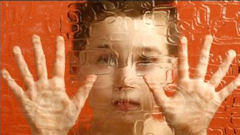The term “serious emotional disturbance” (SED) refers to diagnosable mental health problems that disrupt a child’s ability to function socially, academically and emotionally. Virginia’s Department of Behavioral Health and Developmental Services estimates that between 85,000 and 104,000 Virginia children and adolescents have SED. Between 47,000 and 66,000 suffer extreme impairment.
(Source: “Collection of Evidence-based Practices for Children and Adolescents with Mental Health Treatment Needs,” a report of the Virginia Commission on Youth.)
Is the number of emotionally disturbed children increasing or decreasing? Based purely upon my personal experience, I would say that the number is increasing. We simply didn’t see the same kinds of emotional meltdowns when I was a youth a half century ago that seem so epidemic today — and we didn’t enjoy the “blessings” of Prozac, Zoloft and the rest of the anti-depression formulary that we do today.
But the historical record shows that emotional disorders have always afflicted people, although they may have taken a different form. I suspect that emotional fragility is a genetically influenced trait that arises in a predictable percentage of the population generation after generation, the difference being how each generation manifests the anxiety and how society classifies the behaviors.
 I have in my library a book written by Edward Shorter, “From Paralysis to Fatigue: A History of Psychosomatic Illness in the Modern Era.” Shorter notes that there have always been people with emotional disorders. In the Middle Ages, their bizarre behaviors were interpreted as demon possession. By the early Victorian era, new intellectual fashions had brought new diagnoses and new kinds of behavior. Young women spent years on the couch, rendered paralyzed by “spinal irritation.” The 19th century also saw widespread motor hysteria, in which people (primarily young woman) thrashed about with their limbs. As medical paradigms changed, new behaviors arose, such as fainting spells.
I have in my library a book written by Edward Shorter, “From Paralysis to Fatigue: A History of Psychosomatic Illness in the Modern Era.” Shorter notes that there have always been people with emotional disorders. In the Middle Ages, their bizarre behaviors were interpreted as demon possession. By the early Victorian era, new intellectual fashions had brought new diagnoses and new kinds of behavior. Young women spent years on the couch, rendered paralyzed by “spinal irritation.” The 19th century also saw widespread motor hysteria, in which people (primarily young woman) thrashed about with their limbs. As medical paradigms changed, new behaviors arose, such as fainting spells.
After the age of Freud and the discovery of the subconscious, outward manifestations of emotional fragility turned inward. At the time of his writing in 1992, Shorter suggested that Americans had developed a proclivity to amplify and medicalize normal bodily signals of pain and fatigue. Thus, levels of pain that would be easily tolerated in a peasant society became a source of great emotional distress. Another manifestation of stress and anxiety that became socially sanctioned in modern society was chronic fatigue.
Writes Shorter, “If one interprets being sick as seeking care for an illness, the average person in our society today is ‘sick’ more than twice a year, as opposed to less than once a year on average in the 1920s. … Illness is now channeled to the doctor’s office, as people redefine themselves as patients.”
Shorter was writing two decades ago, before the widespread dispensation of pharmaceuticals to address depression. The word “depression” did not make an appearance in his book’s index. But as medical paradigms have evolved, so have patients’ response to the cues of their doctors and society at large. Thus, today’s seeming epidemic of depression may be just the latest manifestation and classification of age-old emotional fragilities.
It is theoretically possible that we are seeing something entirely new. A plausible case can be made that widespread lead poisoning contributed to the spike, and subsequent decline, of violence seen in America’s inner cities. Perhaps the playing of computer games alters the wiring of young children’s brains in a way that affects their functioning.
But if Shorter is right — if Americans are now more prone to medicalize psychosomatic illness — that may explain a lot about the nation’s soaring health care costs. Emotional illnesses tend to be chronic; they cannot be “cured” with a single procedure, as, say, an appendectomy can cure a burst appendix. Patients wander from doctor to doctor seeking medical treatment for an underlying disorder that has no cure.
What’s the answer? I don’t know. I’m not even sure I know the question.



